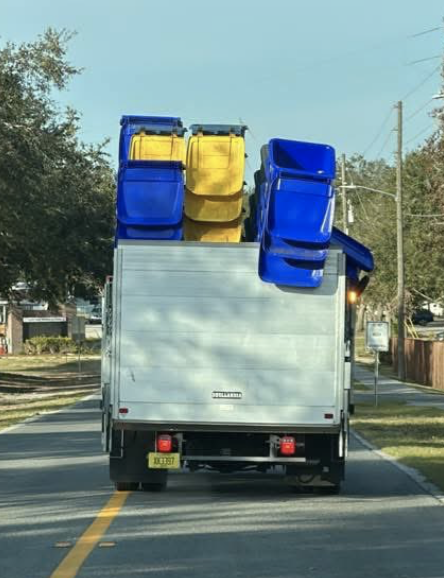It has been estimated that less than 10% of all plastic ever produced has been recycled. 90% of all the plastic ever made is sitting in landfills, oceans, or has been incinerated (best option IMHO.) In the US, it’s even worse. Only 5-6% of plastic waste actually gets recycled.
Some cities are lying…
A lady dropped an AirTag in her recycling bin to find out that Houston has collected 250 tons of plastic since 2022 and not recycled any of it. pic.twitter.com/j5gWw4SCZ4
— Mitchell Baldridge (@baldridgecpa) August 31, 2024
In Philly we “recycle” and you can be fined if you do not. It’s all dumped with the regular trash in the same landfill. Since China no longer buys our city’s recycling it has turned into a huge scam
— Matt Gambone (@Matt_Gambone) January 8, 2025
…and some have given up the sham
Baltimore threw all their recycling in the trash for 8 years before the public found out.
— Peter Djerf (@PeterDjerf) January 8, 2025
Seems like the whole thing is a joke.
I asked Grok: “how much recycling actually occurs in the US when people separate trash and have it picked up?”
Note we get the blame for a lot of it…”wishful recycling”! It’s also true that China is rich enough not to buy our trash anymore.
When people in the United States separate trash for recycling and have it picked up, the actual recycling rate can vary significantly based on several factors including material type, local infrastructure, and contamination rates. Here’s an overview based on available data:
- Overall Recycling Rate: According to the U.S. Environmental Protection Agency (EPA), the national recycling rate for municipal solid waste (MSW) was around 32.1% in 2018. This includes both recycling and composting.
- Material-Specific Recycling:
- Plastics: The recycling rate for plastics in the U.S. has been notably low, with reports indicating that only about 5% to 6% of plastic waste is recycled.
- Paper and Paperboard: Paper products have a higher recycling rate, with around 68% of paper and cardboard being recycled in 2018.
- Metals: For metals like aluminum and steel, recycling rates are higher; for instance, aluminum can recycling can be quite effective due to its economic value.
- Glass: Glass recycling rates are also variable but generally lower than paper, with much of the glass ending up contaminated during single-stream recycling processes.
- Contamination and Sorting Issues: A significant portion of materials put into recycling bins can end up in landfills due to contamination or improper sorting. For instance, about 16.9% of what gets put in recycling bins doesn’t belong there and thus ends up as trash. Additionally, the effectiveness of recycling facilities can impact these rates, with some materials being too contaminated or mixed to be feasibly recycled.
- Local Variations: Recycling rates can differ widely by state or municipality. Some areas have better recycling programs and facilities, leading to higher actual recycling rates, while in others, due to various reasons like lack of facilities or high contamination, much of the recycling ends up in landfills.
- Public Perception and Participation: There’s also a discrepancy between public perception and actual recycling outcomes. Many Americans believe they are recycling effectively, but confusion over what can actually be recycled leads to only about half of all household recyclable material being correctly placed in recycling bins.
In summary, while a significant amount of waste is collected for recycling in the U.S., the actual recycling rate is considerably lower than what might be implied by collection efforts, especially for certain materials like plastics. This is influenced by both systemic issues like facility capabilities and individual behaviors like contamination due to wishful recycling.
